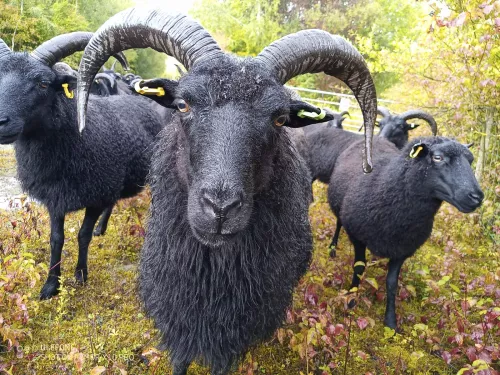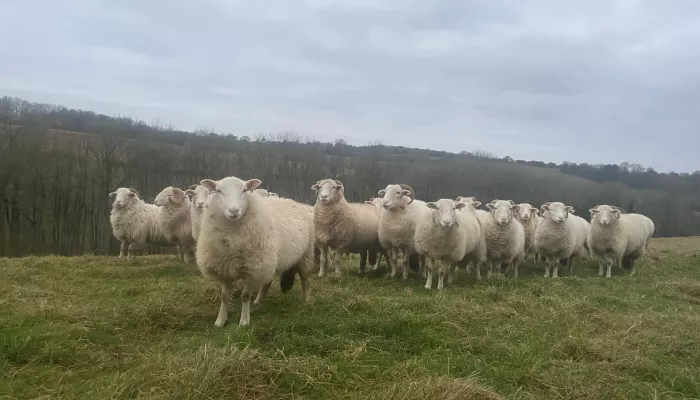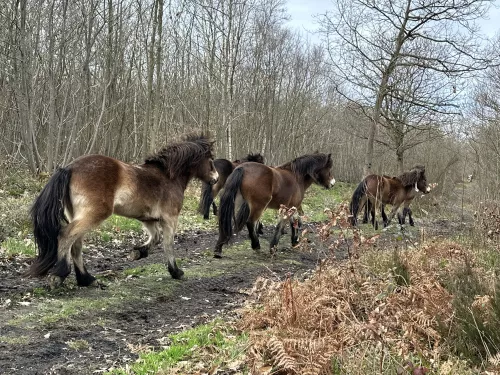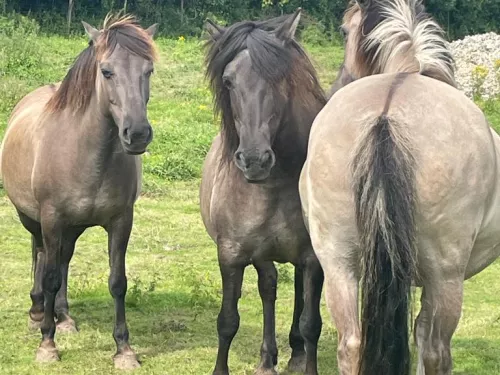
Hebridean sheep
An all-black compact mountain sheep with a taste for bramble and young scrub.

The story goes... they were bred by the Romans to take with them on their marches across the countryside so had to be strong, long-legged and happy to browse on whatever was available as they covered the length and breadth of the countryside.
At first glance, this breed looks like any other lowland white sheep but it is far from that. This breed's behaviour is very different to lowland sheep. They target woody species such as chestnut leaves, bramble and sycamore, climbing fences to reach up for clematis and other woodland and scrub plants.
They are huge, with rams weighing in at 120 kg (18 stone). Their Cheviot heritage also gives them hook noses. Most have horns, although some do not.
White-faced woodland sheep are the most people-orientated of all our sheep, happily approaching those they recognize. They are a relatively new breed for us but so far we have been consistently impressed with their conservation abilities. They are the first sheep breed we have used to manage woodland sites where they excelled so quickly.

An all-black compact mountain sheep with a taste for bramble and young scrub.

Find out about Exmoor ponies and why we use them in conservation.

Konik ponies are one of the largest of the ‘pony’ breeds, often the size of a horse. 'Konik' literally means small horse. They are domestic ponies, bred over 100 years to live in the wild for conservation purposes.